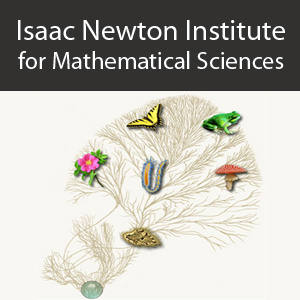Quantifying diversity and abundance in soil microbial communities from high-throughput sequence data
26 mins 31 secs,
24.28 MB,
MP3
44100 Hz,
125.0 kbits/sec
Share this media item:
Embed this media item:
Embed this media item:
About this item

| Description: |
Loza, E (Rothamsted Research)
Monday 20 June 2011, 16:50-17:10 |
|---|
| Created: | 2011-06-23 17:13 | ||||
|---|---|---|---|---|---|
| Collection: | Phylogenetics | ||||
| Publisher: | Isaac Newton Institute | ||||
| Copyright: | Loza, E | ||||
| Language: | eng (English) | ||||
| Credits: |
|
||||
| Abstract: | Soil microbial communities are essential in many different ways. For instance, they support crop productivity and maintain environmental stability through their roles in the carbon, nitrogen, oxygen and sulphur cycles. They also play a central part in plant health and contribute in the bioremediation of contaminated soils. Understanding the complex structure of soil microbial communities is crucial to better manage agricultural soils and minimise the negative impact of agricultural practices. However, this poses important biological, statistical and computational challenges because of the vast numbers and diversity of microbes present in each gram of soil, the paucity of knowledge concerning the majority of them and the sheer amount of data typically observed in soil metagenomics studies.
We address the problem of identifying bacterial groups present in soil and estimating their relative abundance using high-throughput data sampled from agricultural fields. Our procedure computes an overall phylogeny as the agreement among several individual phylogenies independently inferred from carefully selected marker genes. The principle being that such an agreement leads to the true phylogeny underlying all the observed taxa. The overall phylogeny provides information on the identity and abundance of bacterial groups through its clade structure and the relative sizes of these clades. Most importantly, because our method does not bin organisms according to reference databases, it sheds light into the identity and abundance of not only previously known soil bacteria but also of the 'unknowns'. As a first step, we demonstrate the ability of our method to correctly discriminate between different bacterial groups and to quantify their relative abundance using simulated data. We then go on to analyse Roche/454 data sampled from one of Rothamsted's long-term experimental fields. We present preliminary results on this analysis. |
|---|---|
Available Formats
| Format | Quality | Bitrate | Size | |||
|---|---|---|---|---|---|---|
| MPEG-4 Video | 640x360 | 1.84 Mbits/sec | 370.61 MB | View | Download | |
| WebM | 640x360 | 988.58 kbits/sec | 193.08 MB | View | Download | |
| Flash Video | 484x272 | 569.04 kbits/sec | 111.35 MB | View | Download | |
| iPod Video | 480x270 | 506.21 kbits/sec | 99.12 MB | View | Download | |
| MP3 * | 44100 Hz | 125.0 kbits/sec | 24.28 MB | Listen | Download | |
| Auto | (Allows browser to choose a format it supports) | |||||

